 Coffee prices have been soaring in recent months. This applies to the prices of both coffee beans on international markets, coffee in supermarkets and coffee in coffee shops. In this blog we examine the causes and what is likely to happen over the coming months.
Coffee prices have been soaring in recent months. This applies to the prices of both coffee beans on international markets, coffee in supermarkets and coffee in coffee shops. In this blog we examine the causes and what is likely to happen over the coming months.
As we shall see, demand and supply analysis provides a powerful explanation of what has been happening in the various sectors of the industry and the likely future path of prices.
The coffee industry
The cultivating, processing and retailing of coffee is big business. It is the second most widely traded commodity after oil and around 2.5 billion cups are consumed worldwide on a daily basis. In the UK nearly 100 million cups of coffee a day are drunk, with coffee consumers spending around £4 billion per year on sit-down and takeaway coffees and on coffee bought in supermarkets and other shops for making at home. The average takeaway coffee costs around £3.40 per cup with speciality coffees costing more.
Global production in the coffee year 2023/24 was 178 million 60 kg bags (10.7 million tonnes) and the annual income of the whole sector exceeds $200 billion. Around 25 million farmers spread across 50 countries harvest coffee. The majority of these farms are small and family run. Some 100 million families worldwide depend on coffee for their living.
Brazil is by far the biggest producer and accounts for nearly 40% of the market. A good or poor harvest in Brazil can have a significant impact on prices. Vietnam and Columbia are the second and third biggest producers respectively and, with Brazil, account for over 60% of global production.
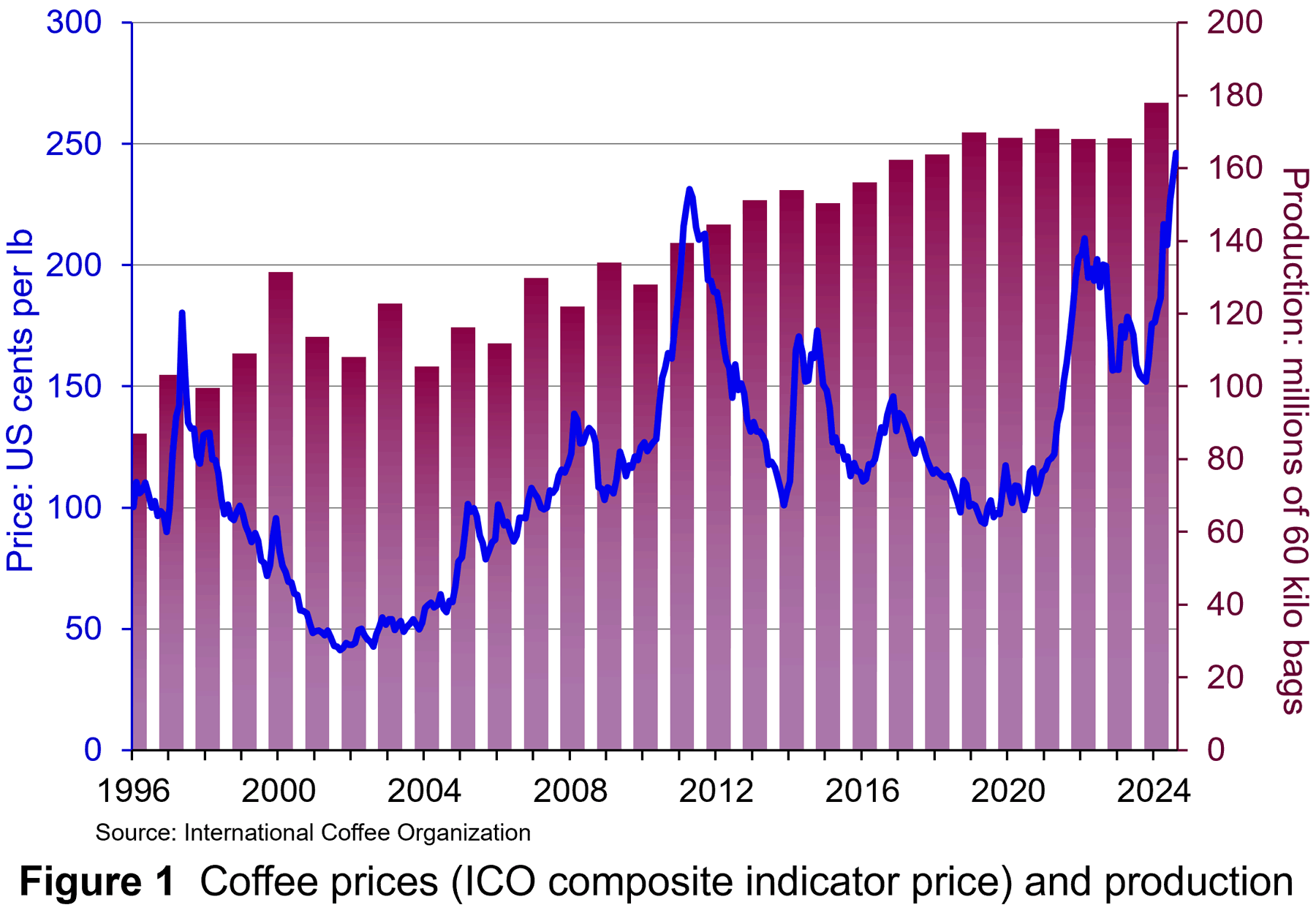 Coffee prices are extremely volatile – more so than production, which does, nevertheless, fluctuate with the harvest. Figure 1 shows global coffee production and prices since 1996. The price is the International Coffee Organization’s composite indicator price (I-CIP) in US cents per pound (lb). It is a weighted average of four prices: Colombian milds (Arabica), Other milds (Arabica), Brazilian naturals (mainly Arabica) and Robusta. Production is measured in 60 kilo bags.
Coffee prices are extremely volatile – more so than production, which does, nevertheless, fluctuate with the harvest. Figure 1 shows global coffee production and prices since 1996. The price is the International Coffee Organization’s composite indicator price (I-CIP) in US cents per pound (lb). It is a weighted average of four prices: Colombian milds (Arabica), Other milds (Arabica), Brazilian naturals (mainly Arabica) and Robusta. Production is measured in 60 kilo bags.
Case Study 2.3 on the student website for Economics 11th edition, looks at the various events that caused the fluctuations in prices and supply illustrated in Figure 1 (click here for a PowerPoint). In this blog we focus on recent events.
Why are coffee prices rising?
 In early October 2023, the ICO composite indicator price (I-CIP), was $1.46 per lb. By 28 August, it had reached $2.54 – a rise of 74%. Colombian milds (high-quality Arabica) had risen from $1.79 per lb to $2.78 – a rise of 55%. Robusta coffee is normally cheaper than Arabica. It is mainly used in instant coffee and for espressos. As the price of Arabica rose, so there was some substitution, with Robusta coffees being added to blends. But as this process took place, so the gap between the Arabica and Robusta prices narrowed. Robusta prices rose from $1.14 in early October 2023 to £2.36 in late August – a rise of 107%. These prices are illustrated in Figure 2 (click here for a PowerPoint).
In early October 2023, the ICO composite indicator price (I-CIP), was $1.46 per lb. By 28 August, it had reached $2.54 – a rise of 74%. Colombian milds (high-quality Arabica) had risen from $1.79 per lb to $2.78 – a rise of 55%. Robusta coffee is normally cheaper than Arabica. It is mainly used in instant coffee and for espressos. As the price of Arabica rose, so there was some substitution, with Robusta coffees being added to blends. But as this process took place, so the gap between the Arabica and Robusta prices narrowed. Robusta prices rose from $1.14 in early October 2023 to £2.36 in late August – a rise of 107%. These prices are illustrated in Figure 2 (click here for a PowerPoint).
This dramatic rise in prices is the result of a number of factors.
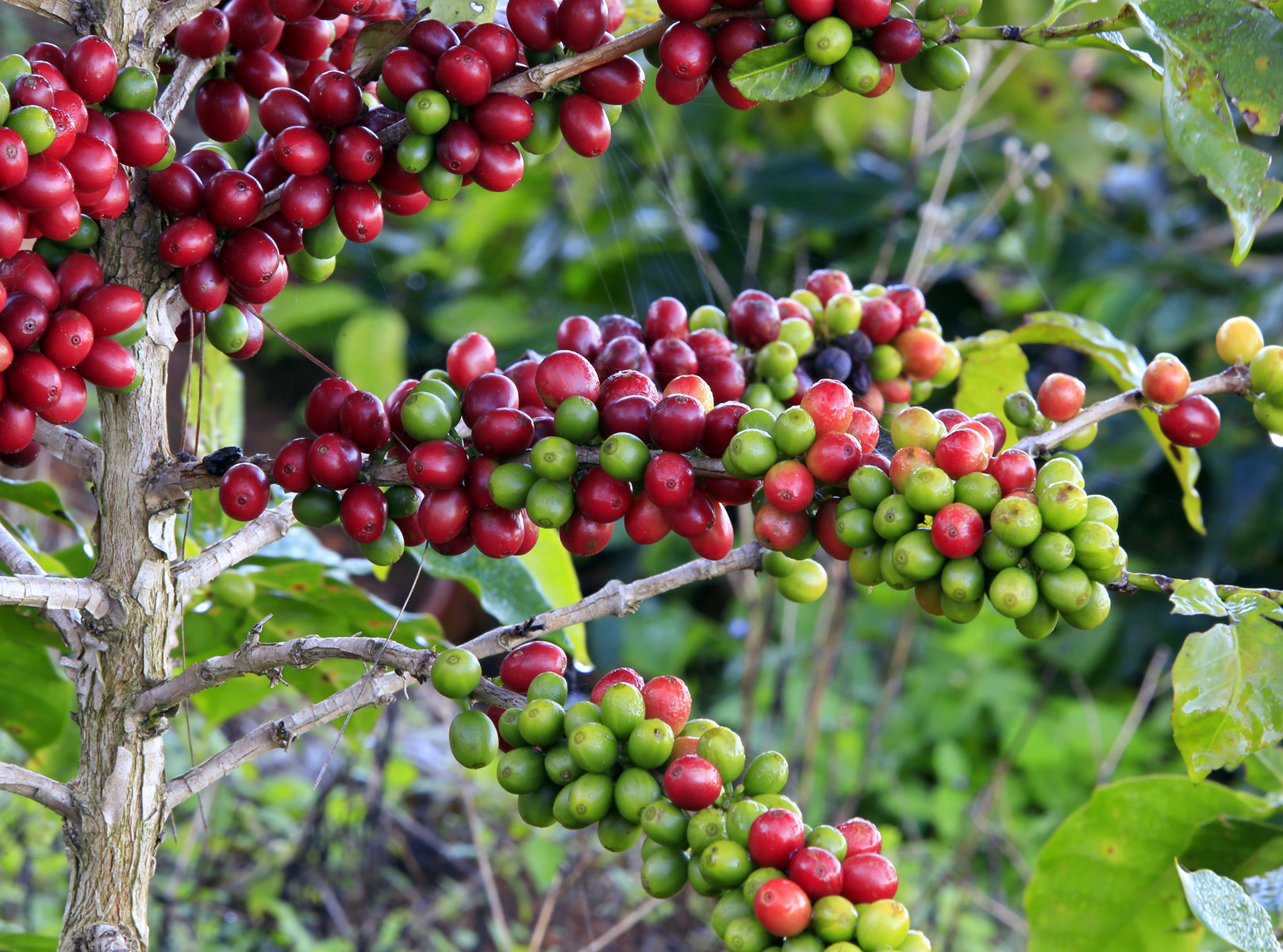 Supply-side factors. The first is poor harvests, which will affect future supply. Frosts in Brazil have affected Arabica production. Also, droughts – partly the result of climate change – have affected harvests in major Robusta-producing countries, such as Vietnam and Indonesia. With the extra demand from the substitution for Arabica, this has pushed up Robusta prices as shown in Figure 2. Another supply-side issue concerns the increasingly vulnerability of coffee crops to diseases, such as coffee rust, and pests. Both reduce yields and quality.
Supply-side factors. The first is poor harvests, which will affect future supply. Frosts in Brazil have affected Arabica production. Also, droughts – partly the result of climate change – have affected harvests in major Robusta-producing countries, such as Vietnam and Indonesia. With the extra demand from the substitution for Arabica, this has pushed up Robusta prices as shown in Figure 2. Another supply-side issue concerns the increasingly vulnerability of coffee crops to diseases, such as coffee rust, and pests. Both reduce yields and quality.
As prices have risen, so this has led to speculative buying of coffee futures by hedge funds and coffee companies. This has driven up futures prices, which will then have a knock-on effect on spot (current) prices as roasters attempt to build coffee stocks to beat the higher prices.
There have also been supply-chain problems. Attacks on shipping by Houthi rebels in the Red Sea have forced ships to take the longer route around the Cape of Good Hope. Again, this has particularly affected the supply of Robusta, largely grown in Asia and East Africa.
New EU regulation banning the import of coffee grown in areas of cleared rainforest will further reduce supply when it comes into force in 2025, or at least divert it away from the EU – a major coffee-consuming region.
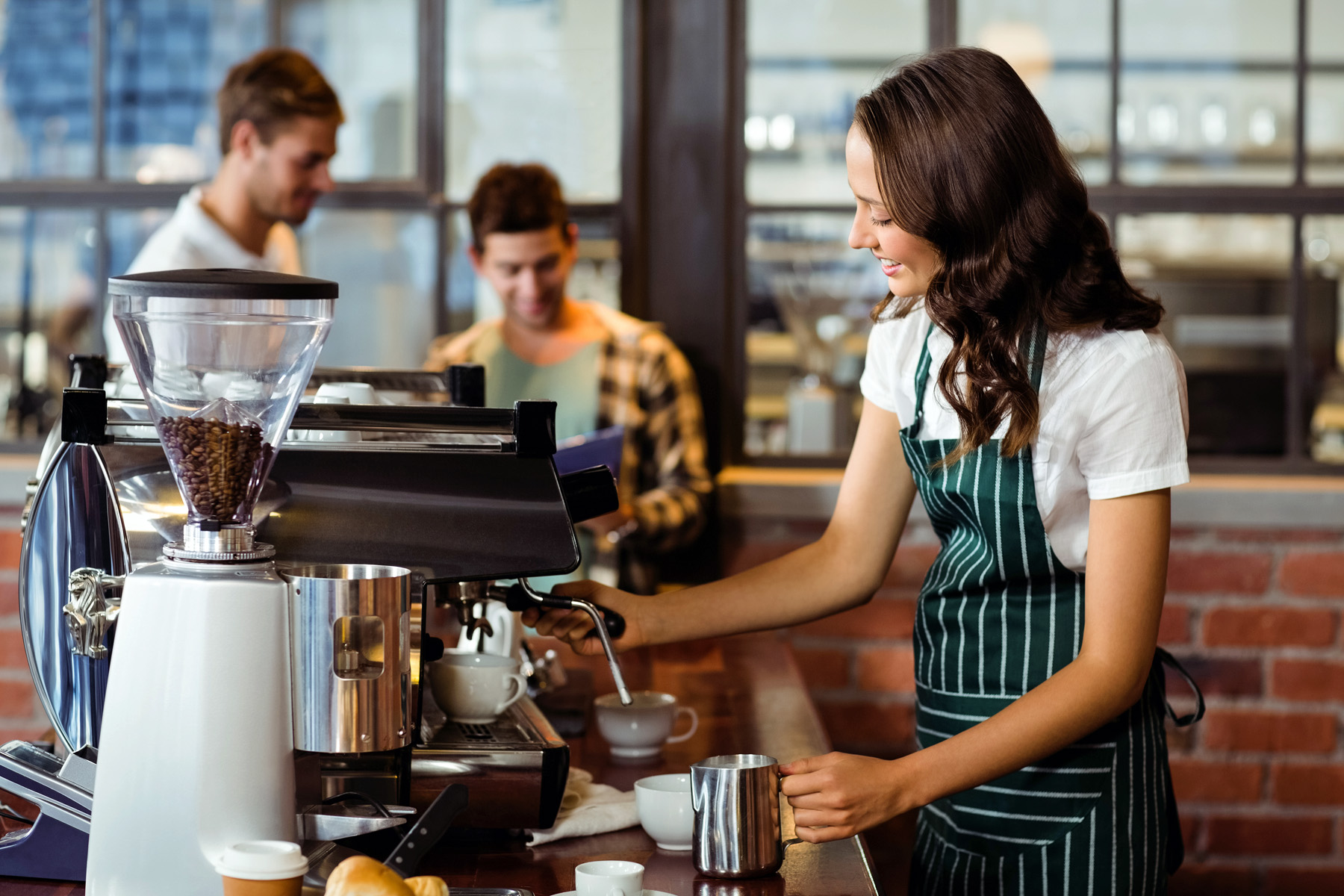 Demand-side factors. On the demand side, the rise of the coffee culture and a switch in demand from tea to coffee has led to a steady growth in demand. Growth in the coffee culture has been particularly high in Asian markets as rapid urbanistion, a growing middle class and changing lifestyles drive greater coffee consumption and greater use of coffee shops. This has more than offset a slight decline in coffee shop sales in the USA. In the UK, the number of coffee shops has risen steadily. In 2023, there were 3000 cafés, coffee chains and other venues serving coffee, of which 9885 were branded coffee shop outlets, such as Costa, Caffè Nero and Starbucks. Sales in such coffee chains rose by 11.9% in 2023. Similar patterns can be observed in other countries, all helping to drive a rise in demand.
Demand-side factors. On the demand side, the rise of the coffee culture and a switch in demand from tea to coffee has led to a steady growth in demand. Growth in the coffee culture has been particularly high in Asian markets as rapid urbanistion, a growing middle class and changing lifestyles drive greater coffee consumption and greater use of coffee shops. This has more than offset a slight decline in coffee shop sales in the USA. In the UK, the number of coffee shops has risen steadily. In 2023, there were 3000 cafés, coffee chains and other venues serving coffee, of which 9885 were branded coffee shop outlets, such as Costa, Caffè Nero and Starbucks. Sales in such coffee chains rose by 11.9% in 2023. Similar patterns can be observed in other countries, all helping to drive a rise in demand.
But although demand for coffee in coffee shops is growing, the rise in the price of coffee beans should have only a modest effect on the price of a cup of coffee. The cost of coffee beans purchased by a coffee shop accounts for only around 10% of the price of a cup. To take account of the costs to the supplier (roasting, distribution costs, overheads, etc), this price paid by the coffee shop/chain is some 5 times the cost of unroasted coffee beans on international markets. In other words, the international price of coffee beans accounts for only around 2% of the cost of a cup of coffee in a coffee shop.
Higher coffee-shop prices are thus mainly the result of other factors. These include roasting and other supplier costs, rising wages, rents, business rates, other ingredients such as milk and sugar, coffee machines, takeaway cups, heating, lighting, repairs and maintenance and profit. The high inflation over the past two years, with several of these costs being particularly affected, has been the major driver of price increases in coffee shops.
The future
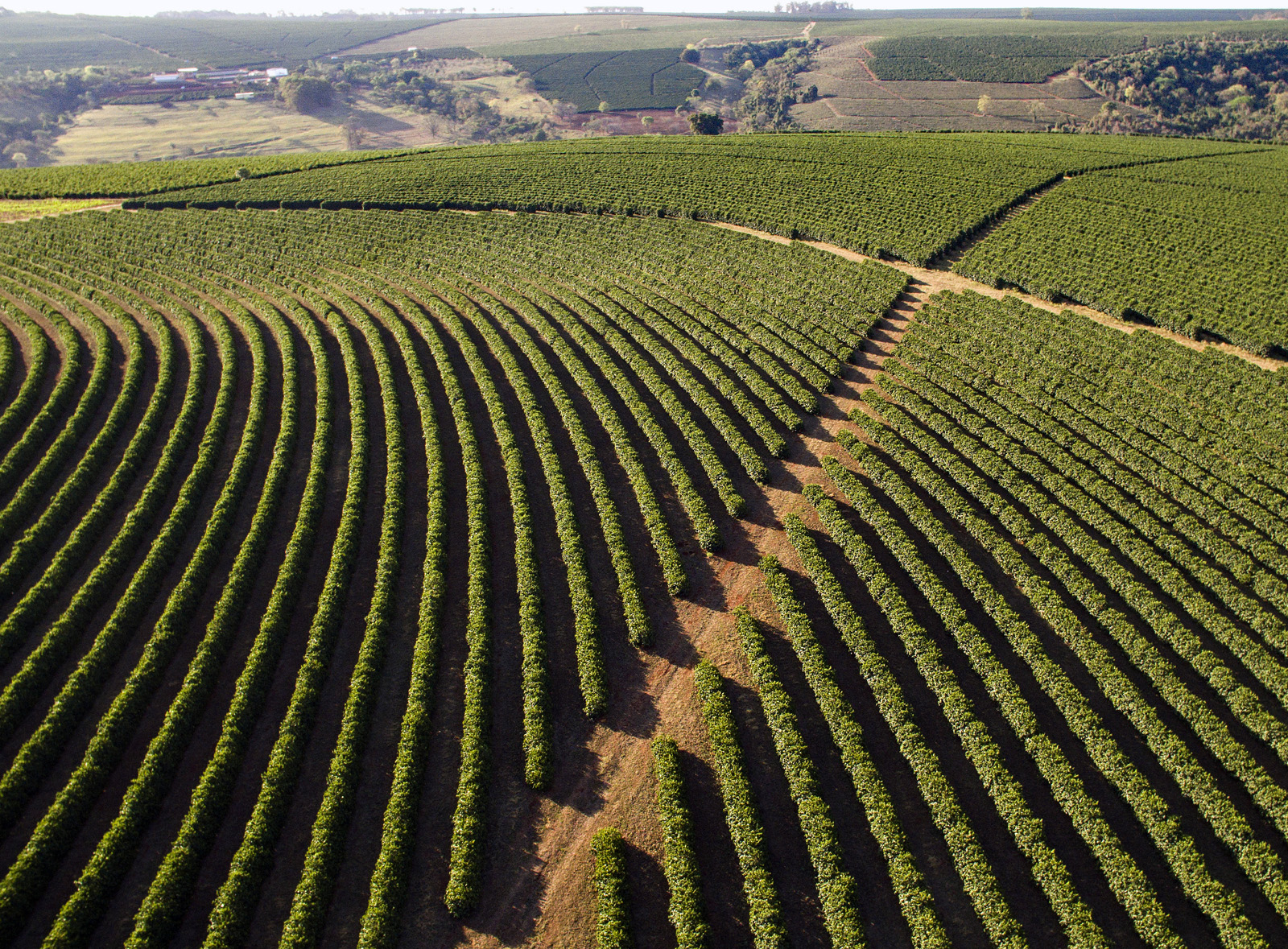 The rise in demand and prices over the years has led to an increase in supply as more coffee bushes are planted. As Figure 1 shows, world supply increased from 87 million in 1995/6 to 178 million 60 kilo bags in 2023/4 – a rise of 105%. The current high prices may stimulate farmers to plant more. But as it can take four years for coffee plants to reach maturity, it may take time for supply to respond. Later on, a glut might even develop! This would be a case of the famous cobweb model (see Case Study 3.13 on the Essentials of Economics 9th edition student website).
The rise in demand and prices over the years has led to an increase in supply as more coffee bushes are planted. As Figure 1 shows, world supply increased from 87 million in 1995/6 to 178 million 60 kilo bags in 2023/4 – a rise of 105%. The current high prices may stimulate farmers to plant more. But as it can take four years for coffee plants to reach maturity, it may take time for supply to respond. Later on, a glut might even develop! This would be a case of the famous cobweb model (see Case Study 3.13 on the Essentials of Economics 9th edition student website).
Nevertheless, climate change is making coffee production more vulnerable and demand is likely to continue to outstrip supply. Much of the land currently used to produce Arabica will no longer be suitable in a couple of decades. New strains of bean may be developed that are more hardy, such as variants of the more robust Robusta beans. Whether this will allow supply to keep up with demand remains to be seen.
Articles
- Even more expensive coffee prices are brewing, but there are some good reasons why
The Conversation, Jonathan Morris (31/7/24)
- Coffee is becoming a luxury, and there’s no escaping it
AccuWeather, Erika Tulfo (1/8/24)
- Coffee prices will rise even higher, says Giuseppe Lavazza
The Guardian, Jonathan Yeboah (9/7/24)
- Coffee prices set to rise even higher, warns Italian roaster Lavazza
Financial Times, Susannah Savage (9/7/24)
- Soaring coffee prices force roasters to add lower-cost beans to blends
Financial Times, Susannah Savage (24/8/24)
- Soaring coffee prices foretell a financial grind
Reuters, Robert Cyran (31/8/24)
- Projected Coffee Price Increase Due to Supply Shortages and Rising Demand
ISN Magazine: International Supermarket News (14/8/24)
- Coffee Market Report
International Coffee Organization (July 2024)
- Strengthening global robusta production: an update
World Coffee Research: News (4/12/23)
- Houthi rebels and the EU make your coffee more expensive
Politico, Carlo Martuscelli (13/8/24)
Data
Questions
- Use a demand and supply diagram to compare the coffee market in August 2024 with that in October 2023.
- How is the price elasticity of demand relevant to determining the size of price fluctuations in response to fluctuations in the supply of coffee? Demonstrate this with a supply and demand diagram.
- How has speculation affected coffee prices?
- What are ‘coffee futures’? How do futures prices relate to spot prices?
- What is likely to happen to coffee prices in the coming months? Explain.
- Why have Robusta prices risen by a larger percentage than Arabica prices? Is this trend likely to continue?
- Look at the price of Colombian Arabica coffee in your local supermarket. Work out what the price would be per lb and convert it to US dollars. How does this retail price compare with the current international price for Colombian milds and what accounts for the difference? (For current information on Colombian milds, see the third data link above.)
- Distinguish between the fixed and variable costs of an independent coffee shop. How should the coffee shop set its prices in relation to these costs and to demand?
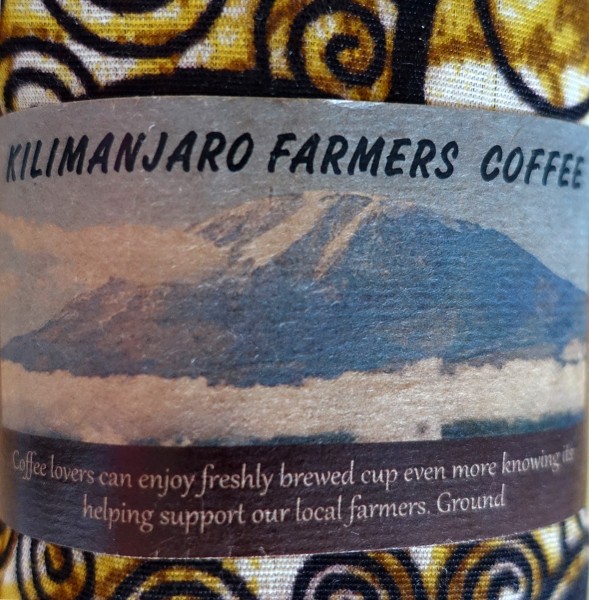 Your Americano, Latte or Cappuccino may soon be more expensive. This is because coffee bean prices are rising. A combination of continuing growth in demand and poor coffee harvests in various parts of the world have led to a rise in both Arabica and Robusta prices, with the International Coffee Organization’s Composite Indicator price (in US dollars) having risen by over 30% since mid-January this year (see chart below: click here for a PowerPoint)
Your Americano, Latte or Cappuccino may soon be more expensive. This is because coffee bean prices are rising. A combination of continuing growth in demand and poor coffee harvests in various parts of the world have led to a rise in both Arabica and Robusta prices, with the International Coffee Organization’s Composite Indicator price (in US dollars) having risen by over 30% since mid-January this year (see chart below: click here for a PowerPoint)
Supply has been affected by droughts in Brazil and Vietnam, two of the world’s biggest coffee producers, and by pests (the Coffee Berry Borer) in the Kilimanjaro region of Tanzania and in other East African countries. Global exports of coffee in July 2016 were 22% down on the same month in 2015.
The growing shortage and rising current (spot) prices is reflected in future prices. 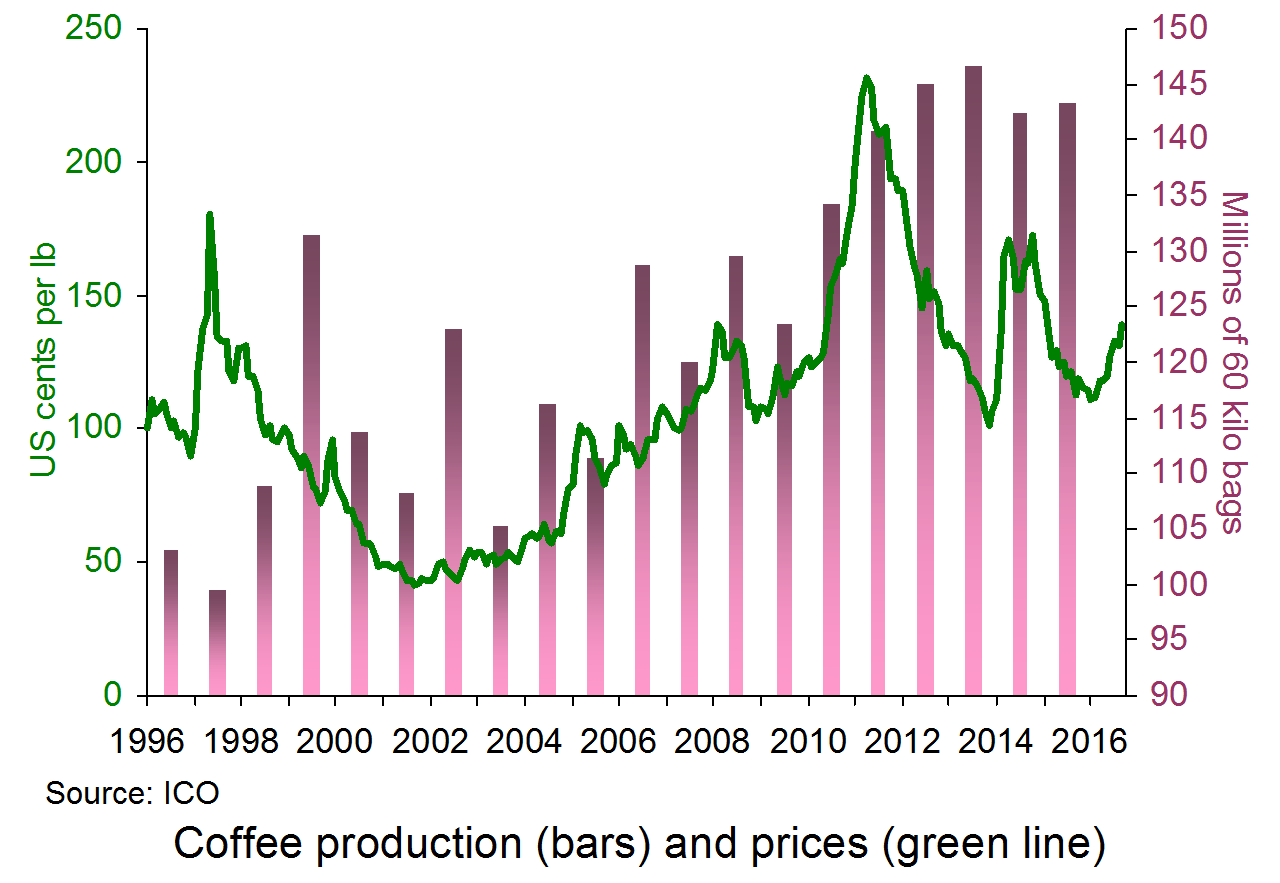 These are prices determined in the market now for trading at a specified future date (e.g. in three months’ time). Future prices depend on predictions of the balance of demand and supply in the future. According to the MarketWatch article below, “Analysts at Société Générale in a note predicted that prices could climb about 30% further by the end of next year”. The current (mid-September) spot price of robusta coffee beans is around $0.96 per lb. The December 2016 future price is around $1.48.
These are prices determined in the market now for trading at a specified future date (e.g. in three months’ time). Future prices depend on predictions of the balance of demand and supply in the future. According to the MarketWatch article below, “Analysts at Société Générale in a note predicted that prices could climb about 30% further by the end of next year”. The current (mid-September) spot price of robusta coffee beans is around $0.96 per lb. The December 2016 future price is around $1.48.
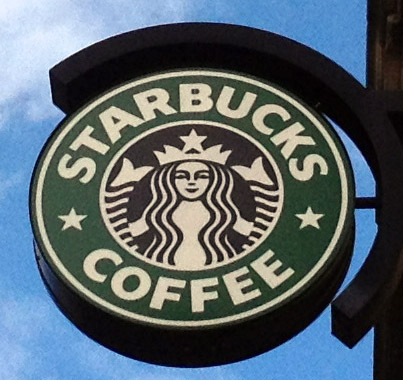 So what effect will this have on the prices in Starbucks, Costa or Caffè Nero? And what effect will it have on ground or instant coffee in supermarkets? To quote the MarketWatch article again:
So what effect will this have on the prices in Starbucks, Costa or Caffè Nero? And what effect will it have on ground or instant coffee in supermarkets? To quote the MarketWatch article again:
A research report from the US Department of Agriculture found that, on average, a 10% increase in green-coffee-bean prices per pound would yield a 2% increase in both manufacturer prices and at the register in places like Starbucks Corp.
This is because the cost of coffee beans is just one element in the costs of coffee roasters and coffee shops. Also these companies use futures markets to smooth out the prices they pay. They hold stockpiles of coffee, which they build up when prices are low and draw on when prices are high. This helps to reduce fluctuations in retail prices.
So don’t worry too much about the price of your morning coffee – at least, not yet.
Articles
Why a surge in coffee-bean prices may not hit the Starbucks set—yet MarketWatch, Rachel Koning Beals (9/9/16)
Wired coffee prices may not slip far News Markets, David Cottle (9/9/16)
Late-harvest woes prompt Brazil coffee harvest downgrade Agrimoney (7/9/16)
Look Out, Latte Lovers: Brazil Drought Hurts Espresso Beans Bloomberg, Fabiana Batista and Marvin G. Perez (13/9/16)
Why Your Morning Coffee Is About to Become Even More Expensive Fortune (28/7/16)
Climate change brews a storm for East Africa coffee farmers Business Daily (East Africa), Paul Redfern (4/9/16)
Coffee Market Report ICO (August 2016)
Data
Commodity Prices Index Mundi
Historical Data on the Global Coffee Trade ICO
ICO’s Coffee Trade Statistics Infographic for July 2016 ICO blog (31/8/16)
Questions
- What determines coffee futures prices?
- How are the price fluctuations of coffee in coffee shops related to the price elasticities of demand and supply? What determines these elasticities?
- Why does a strengthening (an appreciation) of the currency of a coffee exporter affect (a) the price of coffee to producers in the country; (b) international coffee prices in dollars?
- Are poor coffee harvests on balance good or bad for coffee producers? How does this depend on the market price elasticity of demand? Does the answer vary from producer to producer?
- How does speculation affect coffee prices (both spot and future)? Is such speculation of benefit to (a) the coffee consumer; (b) the coffee grower?
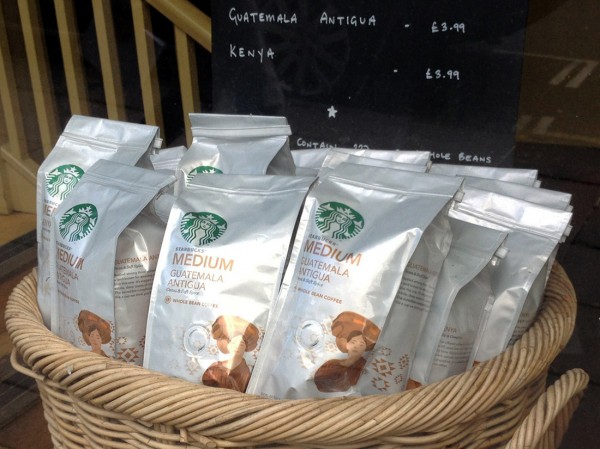 Coffee prices have been falling on international commodity markets. In August, the International Coffee Organization’s ‘composite indicator price’ fell to its lowest level since September 2009 (see). This reflects changes in demand and supply. According to the ICO’s monthly Coffee Market Report for August 2013 (see):
Coffee prices have been falling on international commodity markets. In August, the International Coffee Organization’s ‘composite indicator price’ fell to its lowest level since September 2009 (see). This reflects changes in demand and supply. According to the ICO’s monthly Coffee Market Report for August 2013 (see):
“Total exports in July 2013 reached 9.1 million bags, 6.6% less than July 2012, but total exports for the first ten months of the coffee year are still up 3.6% at 94.5 million bags. In terms of coffee consumption, an increase of 2.1% is estimated in calendar year 2012 to around 142 million bags, compared to 139.1 million bags in 2011.”
 But despite the fall in wholesale coffee prices, the price of a coffee in your local coffee shop, or of a jar of coffee in the supermarket, has not been falling. Is this what you would expect, given the structure of the industry? Is it simply a blatant case of the abuse of market power of individual companies, such as Starbucks, or even of oligopolistic collusion? Or are more subtle things going on?
But despite the fall in wholesale coffee prices, the price of a coffee in your local coffee shop, or of a jar of coffee in the supermarket, has not been falling. Is this what you would expect, given the structure of the industry? Is it simply a blatant case of the abuse of market power of individual companies, such as Starbucks, or even of oligopolistic collusion? Or are more subtle things going on?
The following articles look at recent trends in coffee prices at both the wholesale and retail level.
Articles
Coffee Prices Continue Decline Equities.com, Joel Anderson (17/9/13)
Arabica coffee falls Business Recorder (19/9/13)
Brazil Launches Measures to Boost Coffee Prices N. J. Douek, Jeffrey Lewis (7/9/13)
 Coffee Prices Destroyed Bloomberg (4/9/13)
Coffee Prices Destroyed Bloomberg (4/9/13)
The surprising reality behind your daily coffee: The CUP costs twice as much as the beans that are flown in from South America Mail Online, Mario Ledwith (23/9/13)
Coffeenomics: Four Reasons Why You Can’t Get a Discount Latte Bloomberg Businessweek, Kyle Stock (19/9/13)
Here’s who benefits from falling coffee costs CNBC, Alex Rosenberg (9/9/13)
The great coffee rip-off is no myth Sydney Morning Herald, BusnessDay, Michael Pascoe (23/9/13)
Monthly Coffee Market Report International Coffee Organization (August 2013)
Data
Coffee Prices ICO
ICO Indicator Prices – Annual and Monthly Averages: 1998 to 2013 ICO
Coffee, Other Mild Arabicas Monthly Price – US cents per Pound Index Mundi
Coffee, Robusta Monthly Price – US cents per Pound Index Mundi
Questions
- Why have wholesale coffee prices fallen so much since 2011? Are the reasons on the demand side, the supply side or both? Illustrate your answer with a supply and demand diagram.
- What determines the price elasticity of demand for coffee (a) on international coffee markets; (b) in supermarkets; (c) in coffee shops?
- Why has the gap between Arabica and Robusta coffee prices narrowed in recent months?
- Identify the reasons why coffee prices have not fallen in coffee shops.
- The cost of the coffee beans accounts for around 4% of the cost of a cup of coffee in a coffee shop. If coffee beans were to double in price and other costs and profits were to remain constant, by what percentage would a cup of coffee rise?
- How would you set about establishing whether oligopolistic collusion was taking place between coffee shops?
- What is meant by ‘hedging’ in coffee markets? How does hedging affect wholesale coffee prices?
- Explain the statement “If they have hedged correctly, Starbucks and such competitors as Green Mountain Coffee Roasters (GMCR) are likely paying far more for beans right now than current market rates.”
- What are “buffer stocks”. How can governments use buffer stocks (e.g. of coffee beans) to stabilise prices? What is the limitation on their power to do so? Can buffer stocks support higher prices over the long term?
- What are “coffee futures”? What determines their price? What effect will coffee future prices have on (a) the current price of coffee; (b) the actual price of coffee in the future?
Original post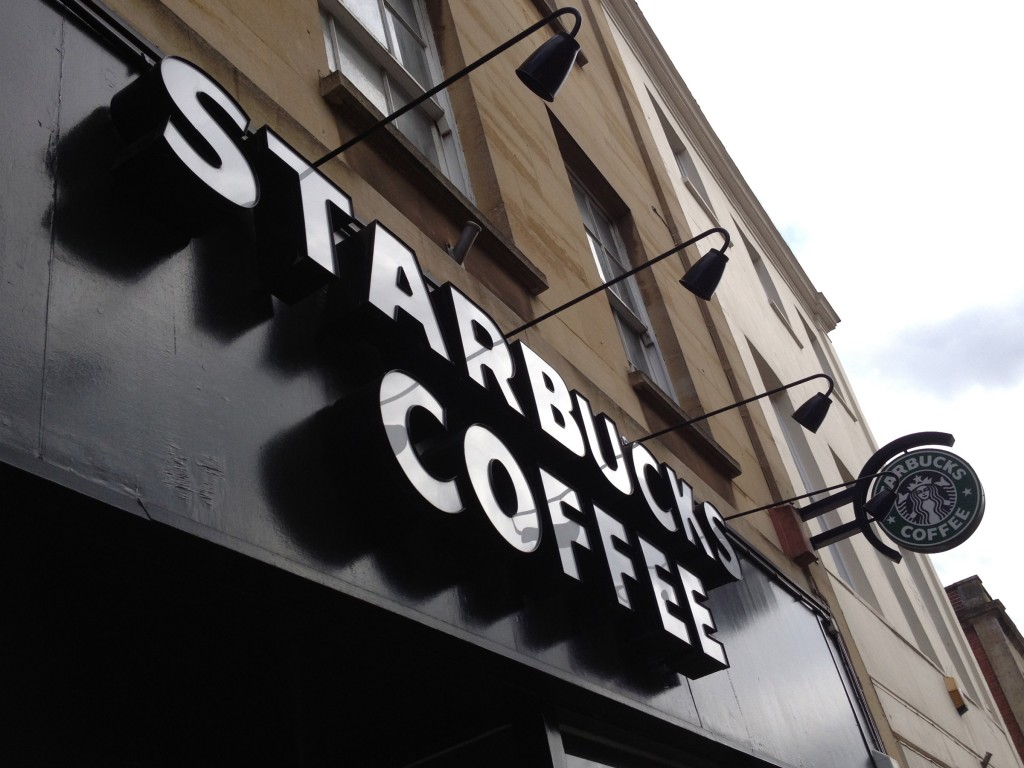
Starbucks’ UK sales in 2011 were worth £398m. Costa’s UK sales were worth £377m. But while Costa paid £15m in corporation tax in 2011/12, Starbucks paid nothing! In fact since opening its first coffee shop in the UK in 1998 it has paid just £8.6m in taxes on UK sales of £3bn.
How is this possible? Let’s look at Starbuck’s 2011 UK sales. Even though these were worth £398 million, its costs were recorded as £426.2m, giving a loss of £28.2m. Costa, by contrast, reported a taxable profit of £49.7m.
So is Starbucks a commercial failure in the UK, recording year after year of losses? Not at all. Starbucks regards the UK as a highly profitable part of its business. As the Independent article below states:
…in its briefings to stock market investors and analysts during the past 12 years, Seattle-based Starbucks has consistently stated that its UK unit is “profitable” and three years ago even promoted its UK head, Cliff Burrows, to run its vastly larger US operation.
So how can reported UK losses be reconciled with a profitable UK operation? The answer lies in transfer pricing.
 Transfer pricing refers to the prices a company charges itself when goods or services are transferred within the company but from one country to another. By varying the transfer prices, a company can choose where to make its profits. Thus if Starbucks’ US operation charges high prices to its UK operation for various services, such as royalties for the use of branding or for management services, or lends money to its UK operation at high interest rates, Starbucks’ profits will rise in the USA and fall in the UK.
Transfer pricing refers to the prices a company charges itself when goods or services are transferred within the company but from one country to another. By varying the transfer prices, a company can choose where to make its profits. Thus if Starbucks’ US operation charges high prices to its UK operation for various services, such as royalties for the use of branding or for management services, or lends money to its UK operation at high interest rates, Starbucks’ profits will rise in the USA and fall in the UK.
Companies employ tax advisers (see for example) and ‘transfer pricing managers’ to help them move their profits from high tax countries to low tax countries. In Starbuck’s case, by charging its UK operation high prices for such things as ‘use of its logo’ it has chosen to move all its profits out of the UK and thus avoid UK corporation tax.
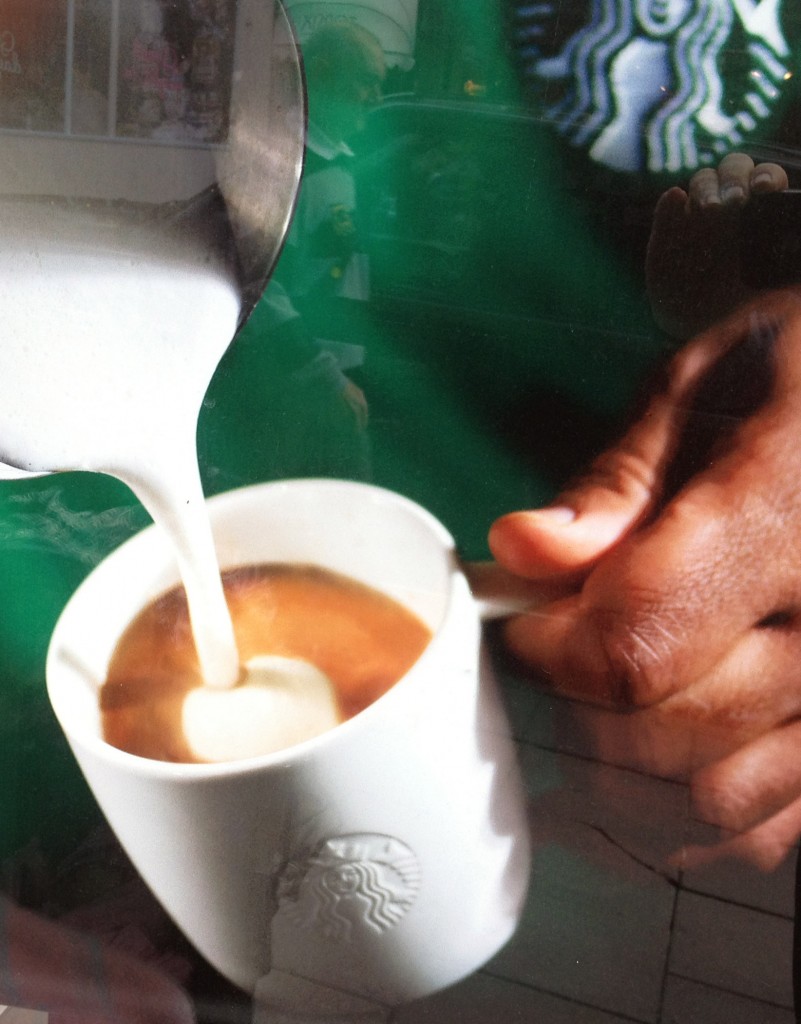 Apart from denying the UK government tax revenues, the practice by Starbucks distorts competition as competing UK companies, such as Costa, AMT, Caffè Ritazza and the many small independents, do not have the same opportunity for transfer pricing and do pay UK corporation tax. As the Guardian article by Richard Murphy below states:
Apart from denying the UK government tax revenues, the practice by Starbucks distorts competition as competing UK companies, such as Costa, AMT, Caffè Ritazza and the many small independents, do not have the same opportunity for transfer pricing and do pay UK corporation tax. As the Guardian article by Richard Murphy below states:
We do have homegrown coffee shops in the UK. A lot of them. And they have to pay their taxes in full here in the UK. They can’t make payments to offshore entities for the use of their logos or advice on how to add hot water to coffee just to avoid tax: they have to pay in full on what they earn in this country. What Starbucks is doing may be legal, but what it also shows is that business does not operate on a level playing field in the UK.
And, as some of the articles below demonstrate, it’s not just Starbucks. Amazon, Facebook and Google have also been accused of avoiding taxes in the UK by engaging in forms of transfer pricing.
Update
On 12 November senior executives from Starbucks, Google and Amazon appeared before the House of Commons Public Accounts Committee to give evidence on their non-payment of corporation tax and their apparent lack of profits in the UK. As you will see from the videos, the MPs were unimpressed by the answers they received.
At the G20 finance ministers meeting in Mexico the previous week, George Osborne, the UK Chancellor, and Wolfgang Schäuble, the German Finance Minister, called for “concerted international co-operation to strengthen international tax standards that at the minute may mean international companies can pay less tax than they would otherwise owe”.
There seems to be mounting international pressure on multinationals to cease using transfer pricing as a means of avoiding paying taxes. Whether it will be successful remains to be seen.
Further Update (June 2013)
In June 2013, After continuing criticism of its tax avoidance policies, Starbucks agreed to pay £10m in corporation tax tin 2013/14 and a further £10m in 2014/15.
Articles for original post
Starbucks UK tax bill comes under scrutiny The Telegraph, Helia Ebrahimi (15/10/12)
Good bean counters? Starbucks has paid no tax in UK since 2009 Independent, Martin Hickman (16/10/12)
Special Report: How Starbucks avoids UK taxes Reuters, Tom Bergin (15/10/12)
 Business Starbucks ‘paid no UK income tax’ since 2009 Channel 4 News (16/10/12)
Business Starbucks ‘paid no UK income tax’ since 2009 Channel 4 News (16/10/12)
 Starbucks ‘paid just £8.6m UK tax in 14 years’ BBC News, Vicki Young (16/10/12)
Starbucks ‘paid just £8.6m UK tax in 14 years’ BBC News, Vicki Young (16/10/12)
 Starbucks’ tax payment is ‘unfair’ say independent cafes BBC News, Joe Lynam (16/10/12)
Starbucks’ tax payment is ‘unfair’ say independent cafes BBC News, Joe Lynam (16/10/12)
Starbucks ‘paid just £8.6m UK tax in 14 years’ BBC News (16/10/12)
What the Starbucks tax expose means for ordinary companies Tax Research UK, Richard Murphy (16/10/12)
Starbucks ‘pays £8.6m tax on £3bn sales’ The Guardian, Simon Neville (15/10/12)
How much tax do Starbucks, Facebook and the biggest US companies pay in the UK The Guardian Datablog (16/10/12)
Amazon: £7bn sales, no UK corporation tax The Guardian, Ian Griffiths (4/4/12)
Facebook criticised for £238,000 UK tax bill last year BBC Radio 1 Newsbeat, Dan Cairns (11/10/12)
U.S. Companies Dodge $60 Billion in Taxes With Global Odyssey Bloomberg, Jesse Drucker (13/5/10)
EBay ‘pays £1.2m in UK tax’ on sales of £800m BBC News (21/10/12)
Articles for update
 Starbucks, Google and Amazon grilled over tax avoidance BBC News (12/11/12)
Starbucks, Google and Amazon grilled over tax avoidance BBC News (12/11/12)
 Companies have ‘social responsibility’ to pay tax BBC Today Programme (12/11/12)
Companies have ‘social responsibility’ to pay tax BBC Today Programme (12/11/12)
MPs slam Starbucks, Amazon and Google on tax Reuters, Tom Bergin (12/11/12)
A highly taxing session for the men from Amazon, Google and Starbucks The Guardian, Simon Hoggart (12/11/12)
Starbucks is leeching tax revenue from UK The Telegraph, Lord Myners (12/11/12)
UK and Germany agree crackdown on tax loopholes for multinationals The Guardian, Patrick Wintour and Dan Milmo (5/11/12)
Britain, Germany target tax from multinationals Deutsche Welle (5/11/12)
HMRC unable to stop multinational tax avoidance accountancylive, Sharon Khin (6/11/12)
Starbucks ‘planning changes to tax policy’ BBC News (3/12/12)
Articles for further update
Starbucks pays UK corporation tax for first time since 2009 BBC News (22/6/13)
Starbucks pays corporation tax, promising the Exchequer £20m over two years IndependentHeather Saul (2/6/13)
Starbucks pays first tax since 2008 The Telegraph, Kamal Ahmed (22/6/13)
Report of Public Accounts Committee
Tax avoidance by multinational companies UK Parliament (3/12/12)
Questions
- Explain how a multinational company can use transfer pricing as a means of reducing its overall tax liability.
- Why may transfer pricing lead to an inefficient allocation of resources?
- What policies can governments adopt to clamp down on the use of transfer pricing to limit their tax liability in their country?
- What insights are shed by game theory in explaining why it may be very difficult to reach international agreement to clamp down on tax avoidance?
- Is it immoral for companies to seek to minimise their tax liability? What are the limits of economics as a discipline in establishing an answer to this question?
 Coffee prices have been soaring in recent months. This applies to the prices of both coffee beans on international markets, coffee in supermarkets and coffee in coffee shops. In this blog we examine the causes and what is likely to happen over the coming months.
Coffee prices have been soaring in recent months. This applies to the prices of both coffee beans on international markets, coffee in supermarkets and coffee in coffee shops. In this blog we examine the causes and what is likely to happen over the coming months. Coffee prices are extremely volatile – more so than production, which does, nevertheless, fluctuate with the harvest. Figure 1 shows global coffee production and prices since 1996. The price is the International Coffee Organization’s composite indicator price (I-CIP) in US cents per pound (lb). It is a weighted average of four prices: Colombian milds (Arabica), Other milds (Arabica), Brazilian naturals (mainly Arabica) and Robusta. Production is measured in 60 kilo bags.
Coffee prices are extremely volatile – more so than production, which does, nevertheless, fluctuate with the harvest. Figure 1 shows global coffee production and prices since 1996. The price is the International Coffee Organization’s composite indicator price (I-CIP) in US cents per pound (lb). It is a weighted average of four prices: Colombian milds (Arabica), Other milds (Arabica), Brazilian naturals (mainly Arabica) and Robusta. Production is measured in 60 kilo bags.  In early October 2023, the ICO composite indicator price (I-CIP), was $1.46 per lb. By 28 August, it had reached $2.54 – a rise of 74%. Colombian milds (high-quality Arabica) had risen from $1.79 per lb to $2.78 – a rise of 55%. Robusta coffee is normally cheaper than Arabica. It is mainly used in instant coffee and for espressos. As the price of Arabica rose, so there was some substitution, with Robusta coffees being added to blends. But as this process took place, so the gap between the Arabica and Robusta prices narrowed. Robusta prices rose from $1.14 in early October 2023 to £2.36 in late August – a rise of 107%. These prices are illustrated in Figure 2 (click here for a PowerPoint).
In early October 2023, the ICO composite indicator price (I-CIP), was $1.46 per lb. By 28 August, it had reached $2.54 – a rise of 74%. Colombian milds (high-quality Arabica) had risen from $1.79 per lb to $2.78 – a rise of 55%. Robusta coffee is normally cheaper than Arabica. It is mainly used in instant coffee and for espressos. As the price of Arabica rose, so there was some substitution, with Robusta coffees being added to blends. But as this process took place, so the gap between the Arabica and Robusta prices narrowed. Robusta prices rose from $1.14 in early October 2023 to £2.36 in late August – a rise of 107%. These prices are illustrated in Figure 2 (click here for a PowerPoint). Supply-side factors. The first is poor harvests, which will affect future supply. Frosts in Brazil have affected Arabica production. Also, droughts – partly the result of climate change – have affected harvests in major Robusta-producing countries, such as Vietnam and Indonesia. With the extra demand from the substitution for Arabica, this has pushed up Robusta prices as shown in Figure 2. Another supply-side issue concerns the increasingly vulnerability of coffee crops to diseases, such as coffee rust, and pests. Both reduce yields and quality.
Supply-side factors. The first is poor harvests, which will affect future supply. Frosts in Brazil have affected Arabica production. Also, droughts – partly the result of climate change – have affected harvests in major Robusta-producing countries, such as Vietnam and Indonesia. With the extra demand from the substitution for Arabica, this has pushed up Robusta prices as shown in Figure 2. Another supply-side issue concerns the increasingly vulnerability of coffee crops to diseases, such as coffee rust, and pests. Both reduce yields and quality. Demand-side factors. On the demand side, the rise of the coffee culture and a switch in demand from tea to coffee has led to a steady growth in demand. Growth in the coffee culture has been particularly high in Asian markets as rapid urbanistion, a growing middle class and changing lifestyles drive greater coffee consumption and greater use of coffee shops. This has more than offset a slight decline in coffee shop sales in the USA. In the UK, the number of coffee shops has risen steadily. In 2023, there were 3000 cafés, coffee chains and other venues serving coffee, of which 9885 were branded coffee shop outlets, such as Costa, Caffè Nero and Starbucks. Sales in such coffee chains rose by 11.9% in 2023. Similar patterns can be observed in other countries, all helping to drive a rise in demand.
Demand-side factors. On the demand side, the rise of the coffee culture and a switch in demand from tea to coffee has led to a steady growth in demand. Growth in the coffee culture has been particularly high in Asian markets as rapid urbanistion, a growing middle class and changing lifestyles drive greater coffee consumption and greater use of coffee shops. This has more than offset a slight decline in coffee shop sales in the USA. In the UK, the number of coffee shops has risen steadily. In 2023, there were 3000 cafés, coffee chains and other venues serving coffee, of which 9885 were branded coffee shop outlets, such as Costa, Caffè Nero and Starbucks. Sales in such coffee chains rose by 11.9% in 2023. Similar patterns can be observed in other countries, all helping to drive a rise in demand. The rise in demand and prices over the years has led to an increase in supply as more coffee bushes are planted. As Figure 1 shows, world supply increased from 87 million in 1995/6 to 178 million 60 kilo bags in 2023/4 – a rise of 105%. The current high prices may stimulate farmers to plant more. But as it can take four years for coffee plants to reach maturity, it may take time for supply to respond. Later on, a glut might even develop! This would be a case of the famous cobweb model (see Case Study 3.13 on the Essentials of Economics 9th edition student website).
The rise in demand and prices over the years has led to an increase in supply as more coffee bushes are planted. As Figure 1 shows, world supply increased from 87 million in 1995/6 to 178 million 60 kilo bags in 2023/4 – a rise of 105%. The current high prices may stimulate farmers to plant more. But as it can take four years for coffee plants to reach maturity, it may take time for supply to respond. Later on, a glut might even develop! This would be a case of the famous cobweb model (see Case Study 3.13 on the Essentials of Economics 9th edition student website).






